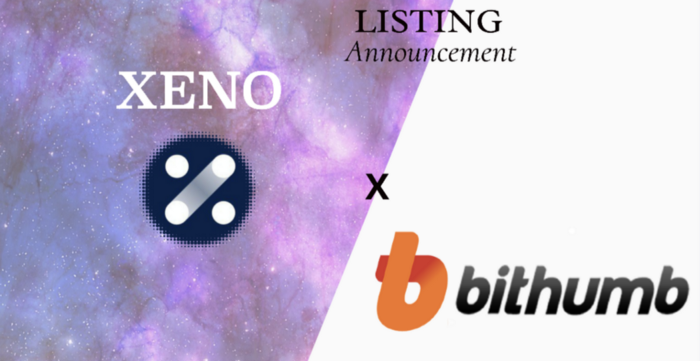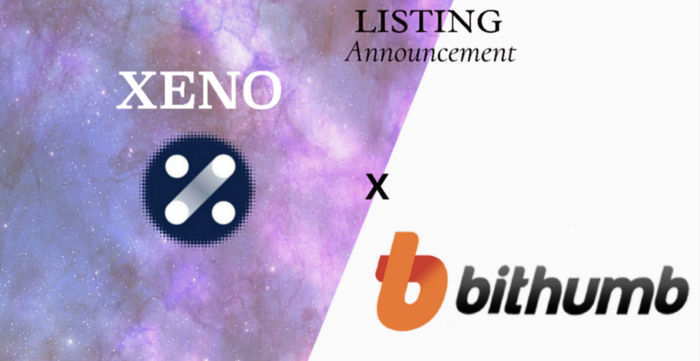Blogs
From Inception, to Mainnet Release and Beyond – The Whole Story of EOS

There has been a great number of news popping up about EOS in the last few weeks. The cryptocurrency which currently holds the 5th position in market cap and was born from Ethereum, but can surprisingly defy its creator’s spot, is one of the most controversial blockchain applications to have reached the top 10.
EOS was in the middle of a very particular occasion on cryptocurrency platforms which are validated by proof-of-stake (PoS). In case the reader is not aware of it, the “official” fork in PoS blockchains – the one which will continue the main blockchain –is based on which new block has the most stakes (which new block validators trust more). This is not even close to being a problem in most PoS blockchain applications. Validators stake on the most probable block to continue the chain (the “real one”) because that’s the one they profit from. EOS uses a particular case of PoS, the Delegated Proof of Stake, in which only 21 “elected” (by voting) validators validate transactions and create new blocks. It’s sometimes considered more democratic because these validators can decide the destiny of the blockchain, but less democratic because only these master nodes can validate blocks. This supposedly makes the consensus and thus the transactions faster (with fewer nodes) and decisions independent of a central authority.
There are many dPoS blockchains out there, but this clash phenomena about EOS makes it worthy of attention and learning.
Even though the financial success, EOS’s journey has faced some scrutiny, like Vitalik’s vehement criticism on GitHub about the platform on May 3.
The controversy surrounding it recently further raised as there were conflicting groups contending for the faith of EOS before the mainnet launch. And the one which scores the most votes would be the one which would precisely decide the platform’s key aspects (and which will profit from its transaction validations, too).
The beginning
EOS was created by a company called Block.one, which raised more than $4 billion in its ICO (the highest earning ICO ever). More importantly, the first white paper of EOS was launched very recently, in 2017! Block.one turned over the project to the stakeholders – it doesn’t have any say on the future of the platform anymore. It’s, just like its progenitor, a platform where dApps can be built – but with no transaction fees. dPoS provides the opportunity for scalability (as there are fewer nodes to validate the chain) and also removes the need for fees PoW requires (since there are no miners to create new blocks).
EOS, the native token, provides a proportional usage (an x% amount of $EOS allows x% of bandwidth). Staking is proportional to usage, so developers “pay” exactly to how much tokens they own. That’s what eliminates GAS and similar prices from EOS, making it relatively free.
EOS utilizes “parallel processing” to speed up smart contracts, in contrast to most platforms, asynchronous communication allows one single process to be executed by different systems at the same time, something like new processors with several cores did in relation to the old ones.
As Block.one left the platform future entirely in the hand of its users, it’s going to be decided exclusively by the process of voting, a just decision which resulted in a good deal of controversy and market agitation.
The first clash
As a dPoS blockchain, it’s a natural and positive – albeit unusual in this magnitude – an occasion that a different delegate (or group of delegates) provide different prospects for the future of the application.
In EOS, though, it has recently reached a proportion in which two opposing groups were interested in putting forward two different projects for the blockchain – the one who wins would effectively create a hard fork in which new blocks would be validated by themselves and with their rules. According to a letter published on Medium, one of the groups, self-declared EOS Core, focusing on security, and EOS, which the main asset was an automated booting tool.
Both groups successfully forked the testnet a few days before the projected mainnet launch.
Today, there are hundreds of groups competing for the delegate position on EOS. Meetings between them and stakeholders are constantly live-streamed and subject to
Voting process controversy
Firstly, voting on a node means the number of tokens staked on it will stay locked there for three days. As EOS prices seem to be volatile, stakeholders are afraid to keep their tokens locked.
There has also been confusion about the process of casting a vote. While previously done only through a complex command line execution, some users created custom tools to facilitate the procedure.
The go/no-go meetings
To settle down the mainnet launch, a coalition called EOS Mainnet Launch Group (EMLG) of validator candidates were assembled. A voting every 24h for a “go” or “no-go”, as to whether the mainnet should or should not be decided and launched. If a decision for go is made (2/3 + 1 votes for “go” are achieved) and 15% of tokens were staked on a group, the group of the 21 block producers will be settled.
On June 9, voting was almost unanimous for “go”, so, in accord to their order of events, the Mainnet will be launched at June 10, 13:00 UTC, with random validators until the delegates receive sufficient votes.
Market events to note through EOS’s history

- EOS achieved the #5 position in market cap in April, when its market cap raised 5x in just two weeks.
- Criticism about its viability, voting process, bugs and Ethereum announcing Casper implementation can be correlated with its slight price drops in the middle of May
- Value is currently rising as the Mainnet is launched
- Near future fluctuations will be defined by, among others, aspects like Mainnet viability, delegates election and Ethereum-related updates
For the latest cryptocurrency news, join our Telegram!
Disclaimer: This article should not be taken as, and is not intended to provide, investment advice. Global Coin Report and/or its affiliates, employees, writers, and subcontractors are cryptocurrency investors and from time to time may or may not have holdings in some of the coins or tokens they cover. Please conduct your own thorough research before investing in any cryptocurrency and read our full disclaimer.
Image courtesy of Pexels
Altcoins
XNO Token of Xeno NFT Hub listed on Bithumb Korea Exchange


Hong Kong, Hong Kong, 25th January, 2021, // ChainWire //
Xeno Holdings Limited (xno.live ), a blockchain solutions company based in Hong Kong, has announced the listing of its ecosystem utility token XNO on the ‘Bithumb Korea’ cryptocurrency exchange on January 21st 2021.
Xeno NFT Hub (market.xno.live ), developed by Xeno Holdings, enables easy minting of digital items into NFTs while also providing a marketplace where anyone can securely trade NFTs.
The Xeno NFT Hub project team includes former members of the technology project Yosemite X based in San Francisco and professionals such as Gabby Dizon who is a games industry expert and NFT space influencer based in Southeast Asia.
NFT(Non-Fungible Token) technology has recently gained huge focus in the blockchain arena and beyond, making waves in the online gaming sector, the art world, and the digital copyrights industry in recent years. The strongest feature of NFTs is that “NFTs are unique digital assets that cannot be replaced or forged”. Unlike fungible tokens such as Bitcoin or Ether, NFTs are not interchangeable for other tokens of the same type but instead each NFT has a unique value and specific information that cannot be replaced. This fact makes NFTs the perfect solution to record and prove ownership of digital and real-world items like works of art, game items, limited-edition collectibles, and more. One of the ways to have a successful…
Altcoins
Should Crypto Projects Devote Resources to Community Growth and Marketing?

2020 has been an incredible year for crypto as investors have generated windfall profits and crypto projects have seen their businesses gain the spotlight they’ve been looking for. While Bitcoin has received most of the attention after major institutional investors announced they were accumulating the increasingly scarce asset, many altcoins have also seen their fair share of glory. When looking at all the big winners of the past year, the first project that probably comes to mind is Chainlink, having appreciated by more than 550% YTD and now valued at over $4.5 billion. But, the actual biggest winner of the year is HEX with a YTD return of over 5,000%.
I mention both of the above projects as they have each taken slightly different paths to achieve greatness. Chainlink has devoted resources toward building a fundamentally sound business with many strategic partnerships while HEX has spent vast sums of money on marketing and promotion. Both approaches are valid, but one thing is certain, it is absolutely imperative for crypto projects to let the crypto community know what makes them special. Of course, one of the reasons that makes crypto so valuable is the powerful blockchain technology that most projects are utilizing.
Cryptocurrency vs. Blockchain Technology
It’s important to make a distinction between blockchain technology and cryptocurrency. Although they are often used interchangeably, they are different. Blockchain technology and crypto were both created after the 2008 financial crisis, but cryptocurrency…
Altcoins
XENO starts VIP NFT trading service and collaborates with contemporary artist Hiro Yamagata


Hong Kong, Hong Kong, 24th December, 2020, // ChainWire //
The XENO NFT Hub (https://xno.live) will provide a crypto-powered digital items and collectables trading platform allowing users to create, buy, and sell NFTs. Additionally it will support auction based listings, governance and voting mechanisms, trade history tracking, user rating and other advanced features.
As a first step towards its fully comprehensive service, XENO NFT Hub launched a recent VIP service to select users and early adopters in December 2020 with plans for a full Public Beta to open in June 2021.
“NFTs are extremely flexible in their usage, from digital event tickets to artwork, and while NFTs have a very wide spectrum of uses and categories XENO will initially focus its partnership efforts and its own item curation on three primary areas: gaming, sports & entertainment, and collectibles.”, said XENO NFT Hub president Anthony Di Franco.
He also added “This does not mean we will prohibit other types of NFTs from our ecosystem However, it simply means that XENO’s efforts as a company will be targeted into these verticals initially as a cohesive business approach.”
Development and Procurement Lead, Gabby Dizon explained, “Despite our initial focus, we found ourselves with a unique opportunity to host some of the works of Mr. Hiro Yamagata. We are collaborating with Japanese artist Hiro Yamagata to enshrine some of his artwork into NFTs.”
Mr. Yamagata has…
-

 Blogs6 years ago
Blogs6 years agoBitcoin Cash (BCH) and Ripple (XRP) Headed to Expansion with Revolut
-

 Blogs6 years ago
Blogs6 years agoAnother Bank Joins Ripple! The first ever bank in Oman to be a part of RippleNet
-

 Blogs6 years ago
Blogs6 years agoStandard Chartered Plans on Extending the Use of Ripple (XRP) Network
-

 Blogs6 years ago
Blogs6 years agoElectroneum (ETN) New Mining App Set For Mass Adoption
-

 Don't Miss6 years ago
Don't Miss6 years agoRipple’s five new partnerships are mouthwatering
-

 Blogs6 years ago
Blogs6 years agoEthereum Classic (ETC) Is Aiming To Align With Ethereum (ETH)
-

 Blogs6 years ago
Blogs6 years agoCryptocurrency is paving new avenues for content creators to explore
-

 Blogs6 years ago
Blogs6 years agoLitecoin (LTC) Becomes Compatible with Blocknet while Getting Listed on Gemini Exchange















